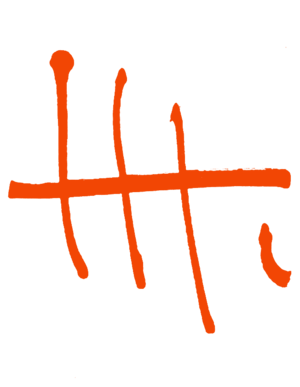1900 — 1904
Sometime in 1900, he receives instruction at Heinrich Wolff and Ernst Neumann’s school for graphic arts, and returns to Heymann at some point during the same year. From approximately 1900 through 1902, Hofmann studies with Bulgarian artist Nikolai Michaeiloff.
Hofmann moves frequently at this time, registering over a dozen different addresses with the Munich city police—a requirement of all residents. His last address in Munich, registered in October of 1904, was on Kaulbachstraße, located one block from Munich’s Englischer Garten.
While he continues to work as an administrator, Hofmann is a part-time art student. From 1902 through 1904, he studies next with Slovene artist Anton Ažbe, whose previous students include Russian artists Alexei Jawlensky and Wassily Kandinsky. Willy Schwarz, another of Hofmann’s likely art teachers, was an instructor at Ažbe’s school of graphic arts; it is most plausible that Hofmann took lessons here with Schwarz. During the summer of 1902, Hofmann takes art lessons in Nagybánya, Hungary.
Sometime between 1900 and 1904, Hofmann meets his future wife, Maria “Miz” Wolfegg (1885–1963) in Munich. In the same period, the artist is introduced to Philipp Freudenberg, owner of Berlin’s high-end department store, the Kaufhaus Gerson. Known for its designer clothing, and its display of Wiener Werkstätte designs, Gerson’s carried the latest in Parisian fashion. Freudenberg and two of his sons, Hermann and Julius, were also avid art collectors.
Hofmann is introduced to Philipp Freudenberg through either a nephew of the department store owner, or through Willy Schwarz. Following their introduction, Freudenberg becomes Hofmann’s patron for the following decade, and provides the artist with the financial means to live in Paris with Miz.
From around 1901 until approximately 1906, Hofmann paints portraits of Miz and of himself that show his painterly experimentation with Pointillist techniques. In a letter written in 1962 to art historian and museum director Ludwig Grote, Hofmann retrospectively asserts, “I painted my first pictures to my heart’s content. I painted Miz—now Mrs. Hofmann—again and again. These first pictures brought me the attention of Paul Cassirer and the acquaintance of Philipp Freudenberg, whose patronage of many years secured my stay in Paris.”
1905
By 4 May, Hofmann is a full-time resident of Paris, and Miz joins him soon after. Their friends include many of the German artists, dealers, and intellectuals who gather at the Café du Dôme on the Boulevard du Montparnasse, including Jules Pascin, Rudolf Levy, Wilhelm Uhde, Friedrich Ahlers-Hestermann, Walter Bondy, Hans Purrmann, as well as Robert and Sonia Delaunay.
Hofmann later remarks that he and other artists were “in constant touch with Matisse, Picasso, Braque, Delaunay, Derain, Gertrude Stein, and others.” Hofmann arrives in Paris amidst a feast of artistic experimentation. To Grote, he describes the city as “a baptism of fire in these years.”
1908
Hofmann’s painting Akt (Nude) is included in the 15th exhibition of the Berlin Secession, held from April through October.
1909
Hofmann’s painting Damenbildnis (Portrait of a Woman) is included in the 18th exhibition of the Berlin Secession, held from April through October.

